Welcome to our Guide to Seasonal Eating: Summer Edition!
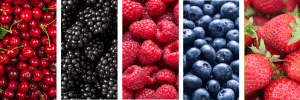
From your year-round farmers market!
It’s summertime, and that means local fields and kitchens are bursting with the season’s huge variety of exciting flavors! Now’s the time to try something new and delicious, knowing it’s as fresh, flavorful, and nutritious as it can be. Not just because it’s local – but because it’s local AND you know who’s growing and making it for you. In this edition of our Seasonal Eating Guide, you’ll learn more about why it pays to know your farmers and food artisans.
Speaking of which: Check out the Farmer Spotlight and get to know the Medina family of Westmoreland Farm. Like all our local food providers, they’re exactly the kind of grower who truly benefits your community. That’s not just a Seasonal Roots marketing spin. That’s according to the experts who study this stuff.
We’ve also got an easy way for you to keep summer’s big harvests from going to waste in your kitchen. And no, it doesn’t require canning skills. When we say easy, we mean EASY. Although if canning’s your jam, you go for it!
Plus, now that school’s out, we’ll help you entertain the kids in the kitchen. In addition to saving your sanity, you’ll be equipping them with an important life skill.
Click on the links below to jump straight to whatever interests you!
IN THIS ISSUE
-
Seasonal Eating Pays Off for Your Community
Eating what’s available locally each season pays off for you AND your community! That’s because buying local food can boost the local economy.
How much of a boost depends on where you live, how big the local food provider is and where they get their supplies, and how many middlemen there are along the way. That’s according to the experts at North Carolina State University, who analyzed a whole slew of studies.
It starts with the “multiplier effect”, the assumption that money spent on local food is more likely to be re-spent within the local economy. In the case of Seasonal Roots, this assumption is correct!
Our farmers and food artisans buy many if not all their supplies locally, often from their fellow small businesses. That fits with the research, which found that small and midscale farmers like ours are more likely to get their supplies from local businesses than big industrial agriculture operations.
In addition, farmers who sell their harvests locally tend to spend more on labor. That means they’re hiring more local folks who in turn have money to spend in the local economy. At Seasonal Roots, our farmers and artisans hire locally and we do the same. We employ local people to pack and deliver all our fresh, local food – people like your neighborhood Market Manager.

- The results? Well, researchers report that every dollar you spend on local food produces an extra 32 to 90 cents-worth of economic activity in your community. But wait! There’s more!
-
-
- Keeping the food supply chain local also reduces the costs of production and transportation, which in turns reduces prices.
-
There’s a common misperception that local food is more expensive than food that comes from, say, California or Chile. It’s true that prices can be higher in places where land and labor are more expensive and property tax rates are higher. But:
On average, the local fresh fruits and vegetables that you buy direct from farmers markets like Seasonal Roots are less expensive than the local produce you buy in grocery stores.
-
-
- Direct markets like Seasonal Roots serve as incubators, supporting new food artisans and farmers as they get up on their feet and build successful local businesses.
- We cut out the extra middlemen who get involved when food travels long distances and through big wholesale markets. That allows our farmers to keep a greater share of each food dollar.
- And for farmers and artisans who spend their weekends at in-person farmers markets, Seasonal Roots saves them the time and money it takes to reach a wider network of new customers.
-
In fact, we’re part of a reliable strategy for local family farms. Farmers who market their own produce and work with organizations like Seasonal Roots report higher rates of profitability. And that keeps them in business, growing and making more nutritious and delicious food right here close to home!
-
Too Much Produce? Save It for Up to a Year!
Is your refrigerator stuffed with more irresistible local summer produce than you can eat in a week? Don’t let all that great local nutrition and flavor go to waste!
Seasonal Roots’ small family farmers work hard to serve you fruits and vegetables picked at the peak of ripeness, and you deserve to enjoy it at its healthful, tasty best. But what if you wind up with too much and can’t eat it during that window when it’s super fresh?
The solution is easy: Freeze it. Fresh produce will keep in the freezer for 8-12 months! Or, if you’re feeling ambitious, you can can it. While refrigeration slows down that ticking clock of deterioration, freezing and canning both stop it cold. The nutrients and flavor stay put until you’re good and ready to eat it.
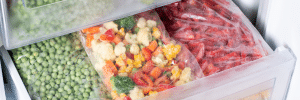
Freezing requires no special gear, and it’s quick and easy. We’re all for quick and easy, so we’re going to focus on freezing here.
-
-
- To save fresh local produce, start with produce that’s as fresh as possible and in good condition. Don’t wait until it’s wilting and turning yellow.
- Clean it thoroughly. For things like tender herbs, greens, berries, and peaches, you can skip to #6.
- For things like zucchini, beans, carrots, and other root veggies, boil water and either drop the produce directly into the water or steam it. Whether boiling or steaming, do this for 2-5 minutes until they’re just done.
- From there, drop the produce into ice water. This process, called “blanching”, stops the enzyme activity that destroys nutrients and changes texture.
- Let the produce cool, then put it into plastic freezer bags, squeezing out the air as you seal it up.
- Or, to keep all that produce from freezing into one big solid unwieldy block, pat it dry, spread it out in a single layer on a cookie sheet, and place the cookie sheet in the freezer. Once the individual pieces are frozen, pop them into bags. When you’re ready to use them, you can pull out a handful if that’s all you need.
- Pro tip: WRITE THE CONTENTS ON THE BAG. Nothing like pulling out a six-month-old frosty bag of… something or other.
-
Follow these steps and the end of summer won’t mean the end of smoothies, pies, soups, and stews made with fresh local summer produce. Freezing makes it possible for you to enjoy delicious, nutritious meals that still have the taste of summer in the off-season. Bonus!
It’s true that heat does cause nutrient loss, and both freezing and canning expose the produce to heat. But in most cases, you don’t lose any more than you would from cooking.
And if you freeze it promptly before those nutrients have a chance to slip away, you’ll generally lose less. Certainly less than you would if you let it sit in the fridge for a couple weeks, even if you ate it uncooked at that point.
For a deeper dive, here’s an article from the University of California at Davis, that compares how much nutritional value is lost during refrigerated storage and cooking versus freezing and canning.
Here’s a more detailed how-to on freezing from Mother Earth News.
And to REALLY get down in the weeds, the National Center for Home Food Preservation lets you look up how to freeze almost anything.
Get the Kiddos Cooking This Summer
School’s out! And for families with kids, you can look forward to several months of little voices complaining that they’re hungry, there’s nothing good to eat in the whole house, and life is just so BORING.
Cooking to the rescue! You may think getting the kids to help will make getting dinner on the table more complicated, but learning to cook is an important life skill and will empower them to make healthy food choices.
Cooking is also a hands-on way to practice math, reading, and following instructions. It gives them a chance to hone fine motor skills, explore food science, and practice the art of patience. All with a delicious (and healthful) reward at the end!
So here are four tips to make kids in the kitchen less crazy-making and more fun.
-
-
- START WITH PROJECTS
-
When you’re rushing to get a meal on the table after a long day, with a long evening of homework and baths ahead, that’s probably not the best time to invite the little chaos crew into the kitchen for the first time.
Aim for a more relaxed time. And offer a fun, child-friendly food project they already like – or might be curious to try. That may be zucchini muffins or kale chips or smoothies… or you name it. This will give them a chance to experiment with new skills, without ruining dinner.

Kids love simple tasks that let them shine. Once they’ve mastered skills like grating, chopping, peeling, and tearing greens, they can graduate to meal prep.
2. LET THEM DO HARD THINGS
Knives are must-have cooking tools, even for kids. Instead of limiting your child’s kitchen activities, teach them how to responsibly handle sharps and other tools.
Use a knife small enough for them to handle safely. And show them how to curl their fingers to keep their fingertips out of the way.
Keep your expectations reasonable based on a child’s age, but kids are capable of more than stirring bowls and pushing buttons. Let them cut vegetables, flip pancakes, and stir sauces. If they are strong and confident enough, let them add and remove things from the oven.
Just use your best judgment based on your child’s maturity level and abilities. You know them best!
3. USE COMMON SENSE
Give kids challenging, meaningful tasks, making sure those tasks match their abilities. It builds confidence and character and makes everybody feel good. Not to mention, your little ones will actually help you… not just “help” you.
So… cooking with a three-year-old? Leave the chef knife in the butcher block and opt for one with a small blade. Better yet, select a recipe that calls for tearing rather than cutting!
4. CLEAN UP & CELEBRATE!
Good kitchen habits don’t end with the cooking. The job’s not done until you’ve cleaned up after yourself. So keep them engaged – enlist their help washing pots and wiping counters.
Do it often enough and this life lesson will become a habit. Plus a quick clean-up will leave you feeling more inclined to do another kitchen project in the future.
Once the kids are done helping clean up, celebrate the accomplishment! Gobble up a muffin with a big glob of strawberry jam and pat your kid on the back. Don’t forget to pat yourself on the back because you taught your child something today…. and you survived the lesson!
Farmer Spotlight: The Medina Family of Westmoreland Farm
In the beginning Westmoreland Produce was just Arnulfo and Rosa Medina, four acres, and zero heavy machinery. The farm work got done with small hand tools and large amounts of elbow grease.
That was 1989. A hard way to start but as the seasons passed, the Medinas learned more about farming. They also acquired 120 more acres and bigger farm equipment. And their four children grew up and joined the family business.
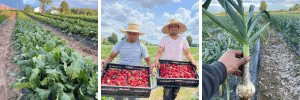
Today, they all believe in being good stewards of their land. They practice sustainable farming, rotating crops to maintain the fertility of their land. To control weeds without herbicides, they hoe by hand and lay out black plastic row covers. The plastic covers keep the soil warm and humid, while underneath the plastic, narrow drip irrigation tubes water without waste.
The Medinas grow a wide variety of vegetables, herbs, flowers, and fruits, with a focus on heritage and specialty varieties. The planting season begins in their five greenhouses early in February. When the weather warms up and there’s no more risk of frost, usually in April, they transplant those first seedlings into the fields.
After that, the family keeps on planting weekly, directly in the ground for the most part. Then they allow the produce to fully ripen. That maximizes nutrition and flavor before harvesting, a season that lasts from May to November.
The result is fresh, ripe produce that tastes better and is better for you while maintaining a healthy ecosystem. The Medinas say they love to grow food in a way that enriches the soil as well as the people it feeds… and it tastes like it!
Benefits and Uses of Summer Favorites
Summer overflows with fresh local fruits and vegetables, all ready to eat – raw, grilled, roasted, steamed, stir-fried, baked… whatever starts your tractor!
Read on below to get a taste of what’s in season and some of the benefits of seasonal eating in summertime!
BASIL
Benefits: Source of vitamin K, manganese, magnesium, strong antioxidant and antibacterial qualities.
Uses: Add to salads, marinades, and pizzas. Sprinkle over berries, ice cream, or a summer cocktail/mocktail. Try basil pesto on a variety of dishes well beyond pasta!
Virginia and Maryland harvest season: May-November.
BELL PEPPERS
Benefits: Source of Vitamins C, B6, and fiber. Red peppers contain more than twice as much vitamin C as an orange, plus antioxidants.
Uses: Add to salads, pizzas, and stews. Stuff them or toss them on the grill.
Virginia and Maryland harvest season: June-August.
CHERRIES
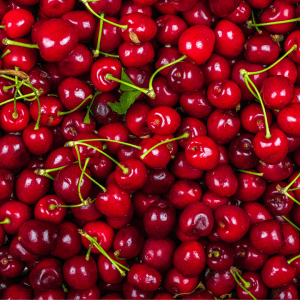
Benefits: Source of antioxidants with anti-inflammatory qualities, especially the tart variety.
Uses: Snacks, toppings, or cook them into cakes, pies, and sauces.
Virginia and Maryland harvest season: May-August.
EGGPLANT
Benefits: Source of anthocyanins to protect heart health, nasunin to help improve blood flow to the brain, and chlorogenic acid to help prevent cancer. Also supports strong bones, boosts cognition, and protects the digestive system.
Uses: Add to stir fries and ratatouille. Grill, roast, and bake them.
Virginia and Maryland harvest season: June-August.
GRAPES
Benefits: Source of antioxidants and vitamin K. Help prevent blood clots, contribute to strong bones, and support healthy brain function.
Uses: Snack on them fresh or frozen. Add to salads, salsas, or smoothies.
Virginia and Maryland harvest season: August-October.
PEACHES
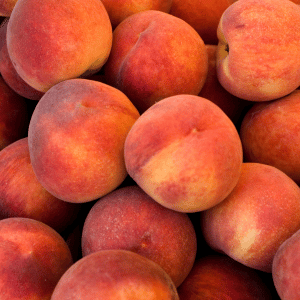
Benefits: Antioxidants, vitamins C & A, and potassium, which helps regulate blood pressure and post-workout muscle recovery.
Uses: Snacks, cobblers, pies. Add to salads and sweet or savory sauces, or grill them!
Virginia and Maryland harvest season: June-September.
SUMMER SQUASH
Benefits: Great source of antioxidants, including vitamin C. Promotes a strong immune system and good eye health.
Uses: Use a spiralizer to make a healthy pasta substitute, chop them up and add raw to a grain salad, or brush slices with olive oil and grill. Bake or add to soups, stews, stir fries, and kabobs.
Virginia and Maryland harvest season: May-September.
SWEET CORN
Benefits: Source of vitamins B1, B5, & C, phosphorus, manganese, folate, ferulic acid, and fiber. Good for the heart, eyes, cancer prevention, and memory enhancement.
Uses: Boil, steam, roast, or grill. Eat it on the cob or off. Add kernels to salads, soups, and stir fries.
Virginia and Maryland harvest season: June-August.
SWISS CHARD
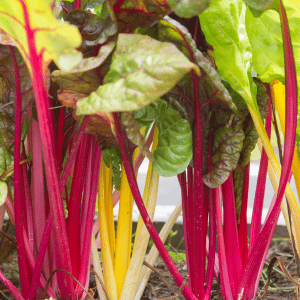
Benefits: Source of antioxidants. Rich in magnesium which has been linked to control of blood sugar levels, depression, anxiety and migraines. Also has potassium which is linked to reduced blood pressure and bone and muscle health.
Uses: Use it like spinach. Add to salads, soups, stews, stir fries, and smoothies. Wrap sandwiches or burgers.
Virginia and Maryland harvest season: June-August
TOMATOES
Benefits: An army of antioxidants! And a great source of vitamin C, beta-carotene to support healthy eyes and skin, minerals like potassium and phosphorus to build strong bones and teeth, protect against cardiovascular disease, and reduce blood pressure and inflammation.
Uses: Add to salads, sandwiches, sauces, stews, stir fries, salsas, kabobs, pizza, or just enjoy them plain with a little salt.
Virginia and Maryland harvest season: July-October.
WATERMELON
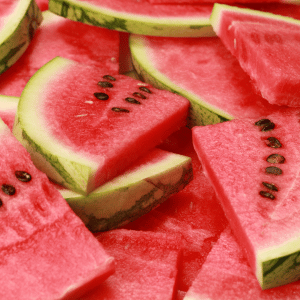
Benefits: Low in sugar, high in vitamins A & C to help lower blood pressure and reduce risk of cardiovascular disease. Also, lycopene which may help protect against UV rays and cancer.
Uses: A refreshing snack, a low-calorie dessert, or add to a salad.
Virginia and Maryland harvest season: June-August.
About Seasonal Roots
Since 2011, Seasonal Roots’ online farmers market has connected Virginia families with local family farmers who use sustainable, humane practices. Our neighborhood market managers – who believe in living better through scrumptious, healthy eating, being kind to animals, protecting the environment, and spreading joy – home-deliver freshly harvested produce, pastured eggs, grass fed dairy and meat, plus artisan fare. We empower our members to eat better and live better with more nutritious, flavorful food that’s good for us and good for the planet. More info at seasonalroots.com.
